Endeavor Research Private Ltd successfully hosted the 2nd Edition of Webinar on Chemistry during June 07-08, 2021. The webinar was successful in gathering 35 eminent speakers from various reputed organizations and their paramount talks enlightened the gathering.
The pragmatic meet organized by Endeavor Research Private Ltd received generous responses from Industrialists, Academia, Talented Researchers, and Young Student Community. Industrialists, Researchers, and Students who attended from different parts of the world made the webinar one of the most successful events from the Endeavor.
The scientific program paves a way to gather visionaries through the research talks and presentations and put forward many thought-provoking strategies.
Scientific sessions covered in the webinar i.e. Physical Chemistry | Catalysis | Chemistry for sustainability | Organic & Inorganic Chemistry | Chemical, Biomedical, and Biological engineering | Biochemistry and Medicinal Chemistry | Electrochemistry, Electrolysis, and Corrosion | Material Chemistry and Functional Materials | Theoretical and Computational Chemistry | Environmental and Green Chemistry | Polymer Chemistry | Nano Chemistry | Energy Chemistry & Engineering.
The webinar was marked with the presence of renowned Speakers, Young Researchers, Students, and Business Delegates driving the two-day event into the path of success with keynote and oral presentations.
Keynote Speaker
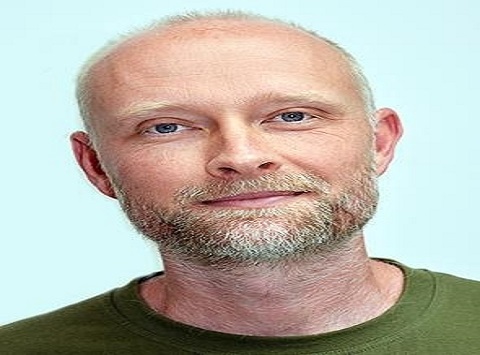
Zlatko Janeba
Institute of Organic Chemistry and Biochemistry - Czech Republic
Dr. Zlatko Janeba earned his Ph.D. (Chemistry) in 2001 from the Institute of Chemical Technology Prague & the Institute of Organic Chemistry and Biochemistry (IOCB) in Prague. He underwent postdoctoral training with Prof. Morris J. Robins (Brigham Young University) and Prof. Paul F. Torrance (Northern Arizona University). He spent 3 years as a senior scientist at Moravek Biochemicals Inc in California. Since 2016, he is the head of the Senior Research Group at IOCB. His main interest is organic & medicinal chemistry, primarily the design and synthesis of modified Nucleo(s)tides with a wide range of biological properties (antiviral, anticancer, anti-parasitic). Member of the International Society for Antiviral Research; International Society of Nucleosides, Nucleotides and Nucleic Acids; and International Society of Heterocyclic Chemistry. He serves as an associate editor of Antiviral Chemistry & Chemotherapy and is a member of the International Advisory Board of ChemMedChem.
The application of prodrugs has become an important strategy in drug design and development in general. The term “pro-drug” was coined by Adrian Albert in 1958 for compounds that needed to undergo biotransformation prior to the exhibition of their therapeutic activity. Currently, about 10% of all marketed drugs worldwide are considered to be in the form of a prodrug. A prodrug is usually a molecule with no pharmacological effects, with improved properties (bioavailability, water-solubility, etc.), which needs to be converted in vivo (by a chemical and/or enzymatic process) into a pharmacologically active drug. Nucleotide analogues represent a group of biologically relevant compounds where prodrug strategies have been studied very extensively and where various types of masking groups (in order to mask the phosphate or phosphonate moiety) have been developed. The ProTide technology, developed by Chris McGuigan, belongs to the most successful prodrug approaches 09 and has resulted in several approved antiviral drugs.
Keynote Speaker
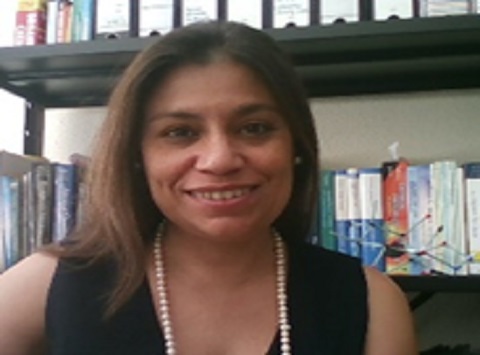
Maria Manuel B. Marques
NOVA School of Science and Technology - Portugal
Dr. Maria Manuel Marques received her Ph.D. in organic chemistry in 2001 under the supervision of Prof. Dr. S. Prabhakar. From 2001 to 2003 she joined the group of Prof. Dr. J. Mulzer at the Institute of Organic Chemistry at the University of Vienna, as a postdoctoral research fellow. In 2003, she returned to the Faculty of Science and Technology, New University of Lisbon (Requimte) as a research fellow and invited professor. In 2016 she obtained her Habilitation in Chemistry. Her research encompasses the development of new synthetic and sustainable methodologies involving metal-catalyzed reactions towards bioactive compounds, in particular heterocyclic molecules.
Azaindoles are bioisosteres of the indole nucleus, a privileged structure, which have enticed the interest of the scientific community for their physicochemical and pharmacological properties with potential applications in the field of medicinal chemistry. Our group has been focused on metal-catalyzed cross-coupling reactions for the preparation of bioactive heterocycles, and on the search for the straightforward synthesis of azaindoles from commercially available amino-o-halopyridines. In particular, we have been exploring the practical palladium-catalyzed cascade C–N cross-coupling/Heck reaction of alkenyl bromides with amino-o-bromopyridines, that allowed a straightforward synthesis of substituted 4-, 5-, 6-, and 7-azaindoles. Additionally, we have studied the N-arylation of substituted azaindoles, which is generally difficult and low yielding. Herein we will present our latest achievments on the one-pot reactions, simple protocols towards not easy to make heterocycles.Azaindoles are bioisosteres of the indole nucleus, a privileged structure, which have enticed the interest of the scientific community for their physicochemical and pharmacological properties with potential applications in the field of medicinal chemistry. Our group has been focused on metal-catalyzed cross-coupling reactions for the preparation of bioactive heterocycles, and on the search for the straightforward synthesis of azaindoles from commercially available amino-o-halopyridines. In particular, we have been exploring the practical palladium-catalyzed cascade C–N cross-coupling/Heck reaction of alkenyl bromides with amino-o-bromopyridines, that allowed a straightforward synthesis of substituted 4-, 5-, 6-, and 7-azaindoles. Additionally, we have studied the N-arylation of substituted azaindoles, which is generally difficult and low yielding. Herein we will present our latest achievments on the one-pot reactions, simple protocols towards not easy to make heterocycles.
Scientific Session Speaker
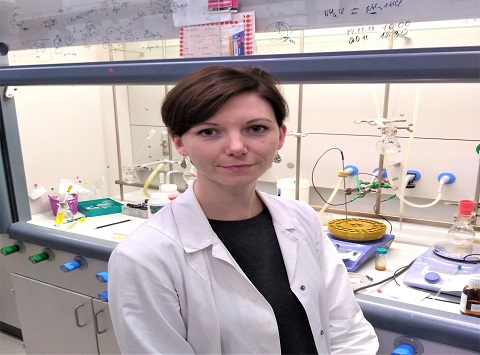
Dace Rasina
Latvian Institute of Organic Synthesis - Latvia
Dr. Dace Rasina is a Principal Researcher at the Latvian Institute of Organic Synthesis. Her previous research was mainly associated with medicinal chemistry projects and the development of new nonpeptidomimetic inhibitors of Plasmepsins as potential antimalarial drug candidates. She has contributed to the development of C-H activation methods and the stereoselective synthesis of threoninols using allyl carbenium ion amination. During the internship at the University of Perugia, she has raised her knowledge in the development of green chemistry methodology. Currently, she is doing her post-doctoral research in the field of natural products, specifically the derivatization of β-caryophyllene.
Rumphellaones A-C are sesquiterpenoids isolated from gorgonian coral Rumphella antipathies. Synthesis of rumphellaone A has been previously reported to demonstrate synthetic methods for the construction of cyclobutane fragment. Semisynthesis is an atractive alternative for the construction of structurally complex molecules. A short semisynthetic route towards rumphellaones A−C and their C-8 epimers from
Scientific Session Speaker
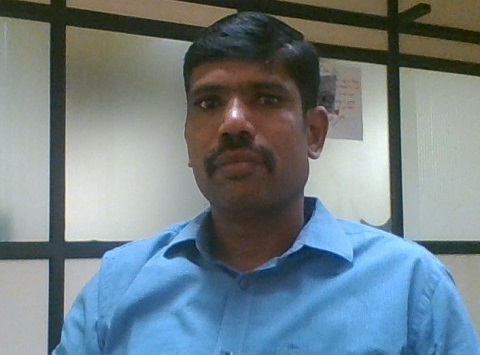
Goreti Rajendar
Indian Institute of Science Education and Research Thiruvananthapuram - India
Dr. Rajendar is an Assistant Professor in the School of Chemistry in the Indian Institute of Science Education and Research -Trivandrum. He is working on the total synthesis of natural products, asymmetric catalysis, developing new synthetic methodologies for C-C and C-X bonds, and medicinal chemistry. He is the recipient of the Ramanujan Research Grant, Early Career Research Award from the Science and Engineering Research Board (SERB) Govt. Of India.
Sharpless asymmetric epoxidation of allylic alcohols opened up a new era to explore the 2,3-epoxy alcohol formation and its ring opening by various nucleophiles in stereo- and regio- selective manner. Sharpless epoxyalcohols gained tremendous attention in synthetic community, widely utilized in total synthesis of complex natural products. Oxiranes are highly strained heterocycles undergo nucleophilic addition reactions to release the strain energy. Because of high energy HOMO lone pair and vast ring strain, a proton or a Lewis acid activates the epoxide for ring opening reaction by the enhanced polarization of C-O bond. This mode of epoxide activation works well even in the presence of other nucleophilic groups like alcohols, esters, carbonates, carbamates and etc. present within the molecule. Generation of an electrophilic center in presence of epoxide using selective activation of other functional groups within the molecule is a challenging task and there exist only few methods in the literature. We hypothesized that nucleophilic hemiacetal group readily generates an oxocarbenium ion by the action of a Lewis acid selectively in the presence of epoxide. The resulted oxocarbenium ion acts as electrophile and facilitates nucleophilic addition by proximal epoxide to produce a bicyclo epoxonium ion, which further undergo a nucleophilic ring opening to give novel cyclic acetals. To the best of our knowledge hemiacetals of epoxy alcohols had never been prepared and explored in epoxide cyclization reactions. The epoxide opening is highly stereoselective (SN2 mode) and its regioselectivity was controlled by the stereoelectronic factors that stabilize the developing positive charge during the epoxide opening. Overal the method demonstrates the conversion of Sharpless epoxides int fully protected triols.
Scientific Session Speaker

Erum Jabeen
Allama Iqbal Open University - Pakistan
Dr. Erum Jabeen currently working as Lecturer at the Department of Chemistry, Allama Iqbal Open University, Islamabad Pakistan. She got her Ph.D. with a specialization in Physical Chemistry from Quaid-i-Azam University Islamabad Pakistan in 2017. She got her MPhil in physical chemistry (2012) and MSc in physical chemistry (2010) from Quaid-i-Azam University Pakistan. During her stay at Quaid-i-Azam University Islamabad, she won QAU merit scholarship 2008-2010, 1st position award 2010, and Higher Education Commission (HEC) indigenous scholarship 2012-2017. Currently, her research focuses on biosensor fabrication for hydroxyl radical sensing, electrode modifications for electrochemical enzyme kinetic assays, and electrochemical enantioseparation techniques. She is also working on DNA binding and antioxidant investigations for versatile applications. She won “AIOU research publication grant 2020-2021” at Allama Iqbal Open University Islamabad Pakistan.
The β-cyclodextrins, because of their property to form inclusion complexes with the number of drug molecules, have been utilized as drug carriers for sparingly soluble formulation of pharmaceutical interest. The inclusion complexation by β-cyclodextrins plays a vital role in overcoming sparing solubility of drug formulations in pharmaceutical field. In the present study, the impact of betacyclodextrin complexation over the DNA binding and cytotoxicity of potent anticancerous benzimidazole derivatives have been investigated. The synthesized benzimidazole derivatives exhibited nitro group at position 5 while phenyl or substituted phenyl at position 2 of benzimidazole skeleton. This led to the naming of these nitro benzimidazoles (NBIs) as PNPBI (2-phenyl substituent), TNPBI (2-tolyl substituent), IPNPNBI (2-(4-isopropyl) phenyl substituent) and CPNPNBI (2-chlorophenyl substituent). First the DNA interaction strength, binding modes and anticancerous activity were established for NBIs, followed by the same analysis for their betacyclodextrin (βCD) complexes. This led to interesting and pharmaceutically beneficial information. The electrochemical redox mechanism for NBI-βCD was altogether different for that of parent NBI. The four experimental techniques applied for DNA binding analysis (UV-Vis spectroscopy, fluorescence studies, cyclic voltammetry and thermal analysis strongly suggested intercalating behaviour for NBIs. On the other hand, their βCD counterparts displayed either groove or electrostatic binding with DNA. The strength of DNA binding was greater for NBI-βCD than their NBI counter parts. The NBI-βCD exhibited better cancer cell toxicity against MCF-7 cell line and less toxicity against MCF-10 cell lines than NBIs which clearly depicts enhanced pharmacological benefits of NBIs through βCD complexation.
Scientific Session Speaker
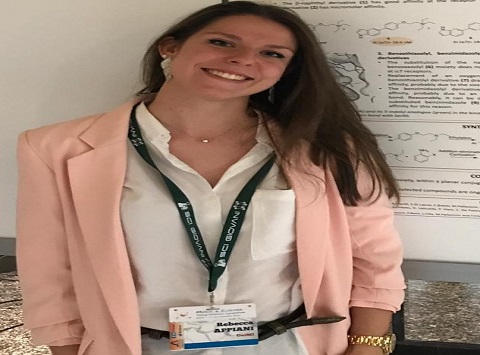
Rebecca Appiani
University of Milan - Italy
Rebecca Appiani is a second-year Ph.D. student in Pharmaceutical Sciences at the University of Milan. The subject of her Ph.D. thesis is the design, synthesis, and characterization of subtype-selective neuronal nicotinic ligands. Dr. Appiani has recently presented the results of her research as poster communications in national meetings and published papers on the European Journal of Medicinal Chemistry (EJMC), Journal of Medicinal Chemistry, and Psychopharmacology. Dr. Appiani has also participated in the development of new efficient procedures in green chemistry, as documented by two publications (European Journal of Medicinal Chemistry and Carbohydrate Research). Before beginning the doctorate course, Dr. Appiani has been an external visitor at the Department of Chemistry at The University of York for five months under the supervision of prof. Peter O’Brien as a winner of the Erasmus+ Traineeship scholarship.
A one-pot reductive amination method was developed to convert aldehydes and ketones into primary and secondary amines under sustainable and safe conditions. For this method, we used a solvent with acceptable EHS (Environment, Health & Safety) properties, such as CPME and a cheap and non-toxic reducing agent (NaBH4), which is activated by the addition of methanol after the formation of the C=N bond. In this way, it was possible to implement a one-pot procedure without using more selective but expensive and less sustainable hydrides (NaBH3CN, Na(OAc)3BH). In the development of such a procedure, the use of a new catalyst, the ferric salt of Aquivion-H, was decidive. It is a perfluorosulfonic ionomer salt, which has been recently used as an efficient and recyclable Lewis catalyst, in Friedel-Crafts acylations. Aquivion-Fe promotes imine formation, and it is removed by simple filtration and can be reused for several cycles. The reaction protocol was applied to 41 different reductive aminations with generally excellent conversion degrees and, in eighteen of these procedures, the amination products were isolated by chromatography in order to verify the consistency between yields and previously observed selectivity. In the end, it was used for the amination of 3(3-trifluoromethylphenyl)propionaldehyde, prepared according to a new method, with (R)-1-(anaphthyl) ethylamine to obtain the active pharmaceutical ingredient Cinacalcet.
Scientific Session Speaker
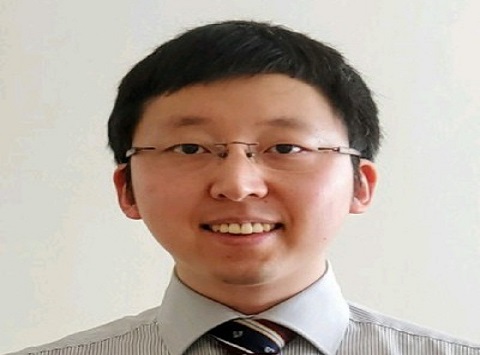
Kyungtae Kim
Los Alamos National Laboratory - United States
Dr. Kyungtae Kim is a Staff Scientist at the Center for Integrated Nanotechnologies (CINT) at Los Alamos National Laboratory. Kyungtae received his Ph.D. in Polymer Chemistry from Pohang University of Science & Technology (POSTECH), South Korea. Before joining CINT, he worked as a postdoctoral research associate in the Department of Chemical Engineering & Materials Science at the University of Minnesota. His research interests include (1) Precision synthesis of soft nano/microparticles made of polymers and organic materials; (2) Self-assembly of soft particles into complex ordered structures that resemble metal alloy phases; and (3) Fabrication of soft particle nanostructures with large-scale ordering and controlled defects.
Small-angle scattering (SAS) is a versatile analytical technique that provides detailed structural information from a sample at the length scale of nanometers. In this talk, I will discuss the basic principles of SAS and the diverse applications of the technique in the characterization of polymers and pharmaceutical materials. Examples include identification of mesophases of polymer bulks and polymer-drug complexes, the influence of excipient microstructure on the final product performance, and formulation optimization of solid dispersions as well as protein-based therapeutics.
Keynote Speaker
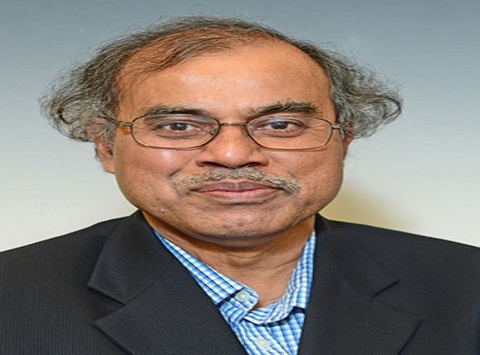
Debasish Kuila
North Carolina A&T State University - United States
Dr. Debasish Kuila, previous Chair and Professor of chemistry is the Research Director of National Science Foundation (NSF)- Centers of Research Excellence in Science and Technology (CREST) Bioenergy Center at North Carolina A&T State University. He was an associate professor at Louisiana Tech and spent over 10 years at Hoechst Celanese and Great Lakes Chemical Corporations and Purdue University. His research interest spans from materials/biomaterials, cell biology, to catalysis. He received Chemcon Distinguished Speaker Award in 2019 in Jaipur, India. He has 12 US patents/applications and has been invited as keynote and plenary speakers for several international conferences.
One of our objectives is to develop stable catalysts forCO2 hydrogenation and Fischer- Tropsch (F-T) synthesis using syngas (CO:H2) enriched with CO2 from biomass gasification or that obtained after biogas reforming. Previous studies in Si-microchannel microreactor focused on the effect of silica, alumina and titania 1 sol-gel support on the F-T activities of Co, Fe, and Ru catalysts at 1 atm. To eliminate different issues with Si-microreactor including anodic bonding and its reusability and the need of a clean room, the F-T studies and kinetics of the reactions using different bimetallic catalysts and mesoporous silica with high surface areas were investigated in 3-D printed stainless steel (SS) microreactor to understand the effect of metals and the type of mesoporous support.2 The best catalytic activity in terms of CO conversion, stability and product selectivity to C1-C3 alkanes was observed for the 10Fe5Ru catalyst. These studies have been extended to F-T synthesis at higher pressure using 3D-printed microreactors. The details of these studies using mesoporous silica supported catalysts will be presented.4
References:
1. R. Y. Abrokwah et al, Molecular Catalysis, 2019, 478, 110566. 2. N. Mohammad et al, (a) Catalysts 2019, 9, 872; 4; (b) Catalysis Today 2020; 358, 303-315. 3. S. Bepari et al., Applied Cat. A, 2020 (4), 608, 117838. S. Bepari et al., Mat. Today Proceedings, 2020/05/29/2020 (a) 4) Manu script in preparation.
Scientific Session Speaker

Chun Ho (Jason) LAM
City University of Hong Kong - Hong Kong
Dr. Jason Lam is an assistant professor at the School of Energy and Environment of City University of Hong Kong (CityU). Before joining CityU, Dr. Jason Lam was a postdoctoral fellow at Yale University and then a visiting assistant professor at Wesleyan University. His research interests revolve around transforming biomass to platform chemicals through electrocatalysis. One of his recent projects was to develop an electrocatalytic protocol to convert crude glycerol into lactic acid for biodegradable plastics manufacturing. His graduate and postdoctoral projects are published in Green Chemistry, Angewandte Chemie International Edition, Sustainable Chemistry (ChemSusChem), and other peer-reviewed journals.
Biomass fast pyrolysis liquid (aka bio-oil) has been long regarded as one of the most promising renewable carbon feedstocks for sustainable hydrocarbon fuel production. However, freshly produced bio-oil has a low specific energy and is highly acidic due to large quantities of oxygenated carbonyls, phenolics, and small chain organic acids (e.g. acetic acid). The unsaturated oxygenated organics are susceptible to polymerization, which can diminish the fuel potential of bio-oil.
This presentation talks about an electrochemical strategy to hydrogenate the aromatic and carbonyl functional groups using only earth-abundant metal catalysts. The described electrochemical system managed to achieve deoxygenation at 60 ⁰C in atmospheric pressure. The ECH upgraded biofuel displayed improved chemical stability and higher specific energy. In addition to chemical relevance, this talk will also discuss why electrocatalysis is a technique suitable for biofuel production.
Keynote Speaker
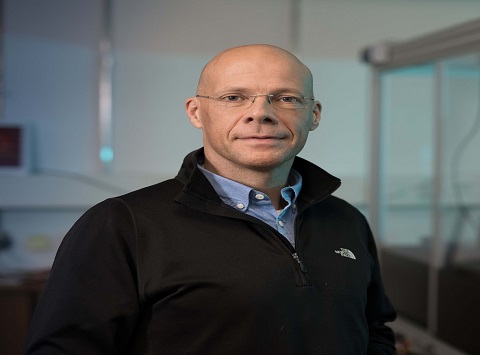
Dirk Guldi
Friedrich-Alexander-University - Germany
Prof. Dirk M. Guldi completed both his undergraduate studies (1988) and Ph.D. (1990) at the University of Cologne (Germany). Since 2004, he is a Full Professor in the Department of Chemistry and Pharmacy at the Friedrich-Alexander University in Erlangen. Since 2018, Dirk M. Guldi is Co-Editor in Chief of Nanoscale and Nanoscale Horizons and he has been named among the world’s Highly Cited Researchers by Thomson Reuters. The Guldi lab and its network belong to the cutting edge of worldwide research in solar-energy conversion with expertise not only in advanced photon- and charge-management, but also in the synthesis of tailored materials and molecular modeling.
At the heart of unlocking the potential of global clean, renewable energy is the concerted effort of Advanced Charge Management (ACM) and Advanced Photon Management (APM). Recent advances regarding molecular ACM have documented the maturity of energy conversion schemes. Adding now APM to ACM by means of down- and/or up-conversion and creating synergies is essential to further boost the efficiency of these sun-driven energy conversion schemes. A full-fledged comprehension of APM is essential as an enabler for creating versatile platforms that are broadly applicable not only in the area of solar electricity, but also solar fuels. APM is, in the molecular context, based on either down-converting photons by means of Singlet Fission (SF), on one-hand, or on Triplet Fusion (TF)/Two Photon Absorptions (TPA) for up-converting them, on the other hand. To harvest photons in the high-energy regime, SF, the molecular analog to multiple exciton generation, stands out. It allows high-energy, singlet-excited states to be down-converted into twice as many low-energy, triplet-excited states, thereby improving solar-cell performance. This is, however, limited to the part of the solar spectrum, where, for example, the SF-materials feature a significant absorption cross-section. To harvest photons in the low-energy regime, necessitates non-resonant, indirect excitation via TF/TPA. Our transdisciplinary research has enabled in recent years to gather a comprehensive understanding of molecular down- and up-conversion.
Keynote Speaker
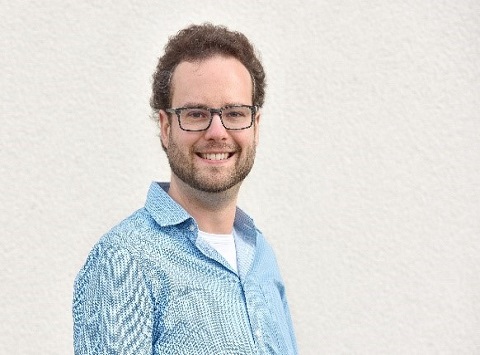
A. Wouter Maijenburg
Martin-Luther-University Halle-Wittenberg - Germany
Prof. Dr. A. Wouter Maijenburg obtained his Ph.D. degree from the University of Twente (Enschede, The Netherlands) in 2014. After working for 2 years as a postdoctoral researcher at the GSI Helmholtz Centre for Heavy Ion Research (Darmstadt, Germany), in October 2016 he became a Junior Professor at the Martin Luther University Halle-Wittenberg. Here, he holds the chair of Inorganic Functional Materials within the Department of Chemistry and he is the leader of the Light for Hydrogen group within the Centre for Innovation Competence (ZIK) SiLi-nano. His research is mainly focused on the nanostructure design for solar water splitting.
Cu-Ga-Se chalcopyrite structures with a band gap of 1.68 eV (CuGaSe2) to 1.85 eV (CuGa3Se5) are considered to be promising materials to be used as the photocathode in a tandem photoelectrochemical (PEC) water splitting configuration. Therefore, we prepared polycrystalline Cu-Ga-Se films with different compositions ranging from Cu-poor CuGaSe2 (Cu/Ga = 0.85) to extremely Cu-poor CuGa3Se5 (Cu/Ga = 0.33) and investigated the effect of the Cu/Ga ratio on the crystal structure, morphology and PEC performance of the films. Without any surface treatment or formation of a p-n junction, we report remarkable saturated photocurrent densities of -19.0 and -12.1 mA/cm2 (measured at -0.40 V vs. RHE) for our films with Cu/Ga = 0.85 and Cu/Ga = 0.33, respectively, using an LED-based solar simulator. These outstanding results cover 86% and 68% of the maximum theoretical photocurrents for materials with a band gap of 1.68 eV and 1.85 eV, respectively. Furthermore, electrochemical impedance spectroscopy (EIS) confirmed that the obtained difference in onset potential (270 mV) between these two films was in agreement with the obtained difference in flat-band potential (290 mV).
Keynote Speaker
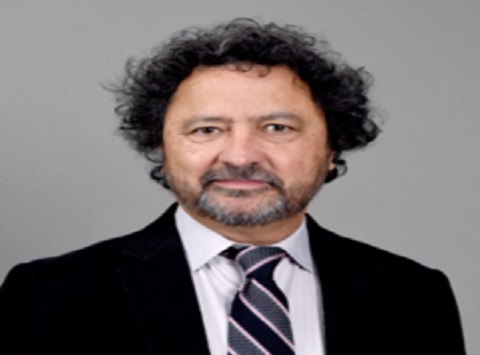
Vladimiro Mujica
Arizona State University - United States
Prof. Vladimiro Mujica got his chemistry degree at the Central University in Caracas, Venezuela, and his Ph.D. at Uppsala University in 1985. Thereafter he was a Postdoctoral Fellow at Tel-Aviv University in 1987. He has been a Visiting Professor to the Donostia International Physics Center, and the universities of Sao Paulo, Uppsala, Paris at Orsay, Tel-Aviv, Northwestern, Marseilles, KIAS, Fritz-Haber Institute, and National Institute of Standards and Technology (NIST). In 2009, he joined the School of Molecular Sciences at Arizona State University (ASU), where he is now a Full Professor. His areas of expertise include the theory of quantum relaxation and transport phenomena in the mesoscopic system, molecular electronics, spintronics, and nano-photonics.
I will present some recent experiments and theoretical developments that support the idea that, under some conditions, it is possible to generate an enantiospecific NMR-response in chiral solid-state materials. This finding has provoked a considerable controversy in the literature, because it challenges the assumption that the two pure crystal enantiomers of a chiral structure should give the same intensity and chemical shift pattern in NMR, specifically in Cross-Polarization (CP) Solid State NMR, which is the technique used in our studies. Our model explains this discrepancy by taking into account that the Chirality-Induced Spin Polarization (CISS) effect modifies the indirect J-coupling Hamiltonian, responsible for one of the mechanisms involved in CP NMR. This inclusion of the CISS effect triggers a response that translates into changes in the local electron spin density, which in turn modify the relaxation times of the nuclei involved in the CP NMR experiment, leading to the observed changes in the intensity patter. These findings are very relevant for applications in quantum information sciences, spintronics and chiral sensing.
Scientific Session Speaker
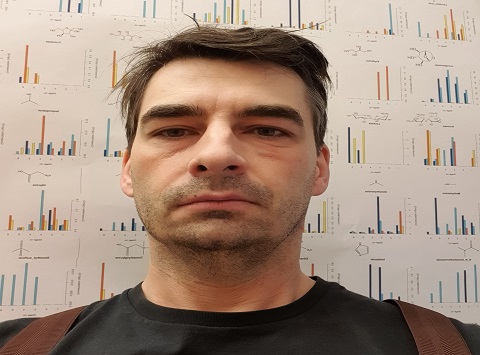
Jan Sýkora
Institute of Chemical Process Fundamentals - Czech Republic
Dr. Jan Sykora graduated from the University of Chemical Technology in Prague in 2002 in the field of X-ray crystallography. Before completing his Ph.D., he joined the Nuclear magnetic resonance (NMR) laboratory at the Institute of Chemical Process Fundamentals of the Czech Academy of Sciences in Prague to undergo extensive training in heteronuclear NMR. His professional focus is placed on the analysis of complex mixtures such as extracts of natural substances or crude reaction mixtures. In recent years, he has focused on the use of NMR spectroscopy in the analysis of body fluids and aerosol samples. Since 2009 he has been working as the head of the Department of Analytical Chemistry and since 2012 also as the Deputy Director of the Institute of Chemical Process Fundamentals.
NMR Aerosolomics offers a different approach to the analysis of complex aerosol mixtures compared to known techniques. It is inspired by metabolomics which is similarly based mainly on the analysis of 1H NMR spectrum. NMR spectroscopy was for the purpose of aerosol chemistry employed only recently. It is a fully quantitative but rather insensitive method which has undergone rapid development and sensitivity gain of late. The method focuses on water-soluble organic compounds representing up to 80% of all organic compounds present in aerosol particulate matter. The compound identification is based on spectrum comparison with that of an authenthic compound. Using an extensive spectrum library of compounds commonly present in aerosol, around 70 major compounds can be identified and quantified in the spectrum of real aerosol. The derived concentration data can be then treated by means of multivariate statistical analysis enabling determination of the main features of aerosol sample.
Scientific Session Speaker
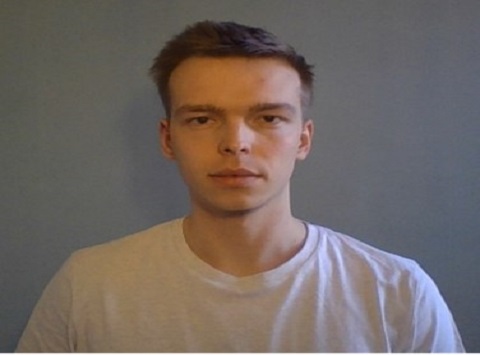
Laurens Van Hoecke
University of Antwerp - Belgium
Laurens Van Hoecke graduated in 2018 from the master’s program Bioscience Engineering Catalytic Technology at the Katholieke Universiteit (KU) Leuven in Belgium. After that, he started his Ph.D. at The University of Antwerp in the group Sustainable Energy, Air and Water Technology of Professor Silvia Lenaerts working in collaboration with the Belgian Shipowner Compagnie Maritime Belge (CMB) on a review study of hydrogen storage for maritime applications. Currently, he is working under the supervision of prof. Patrice Perreault on the development of new reactor technologies for hydrogen release from Liquid organic hydrogen carriers (LOHC).
Hydrogen shows great promise as an alternative fuel in the maritime industry to drastically reduce the emission of greenhouse gasses that emerge from shipping. The main challenge with hydrogen however is in its storage, hydrogen has a low gravimetric energy density ~3000 lower than diesel and efficient storage is crucial for further development. In our research different methods of storage have been compared to one another with emphasis on the energy and space efficiency of the storage method. Over ten types of hydrogen storage mechanism were discussed, these included, compressed hydrogen cylinders, liquid hydrogen, synthetic diesel and synthethic natural gas, methanol, formic acid, ammonia, Liquid Organic Hydrogen Carriers (LOHC), metal hydrides, ammonia borane and sodium borohydride. Next to energy and volumetric efficiency these methods were also compared on their ease-of-use in industry, safety for crew and environment and the development of new reactor technologies to use the hydrogen technologies on a ship.
Scientific Session Speaker
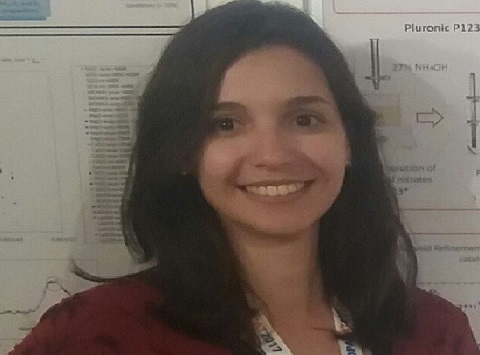
Ananda Vallezi Paladino Lino
Federal University of São Carlos - Brazil
Dr. Ananda Vallezi Paladino Lino has graduated at State University of Maringa (2012) and received Master (2015) and Ph.D. (2019) degrees at The Federal University of Sao Carlos. She has experience in heterogeneous catalysis, methane reforming, and CO2 conversion. Currently, she is a postdoctoral researcher at the Federal University of São Carlos.
Combining the three catalytic methane reforming reactions- steam and dry reforming with partial oxidation of methane- in a single reactor is a good altenative to produce an upgraded syngas that is further used in a Fischer-Tropsch plant aiming the production of liquid fuels. Several sources of methane can be used in the tri-reforming reaction, as natural gas (both conventional and even brazilian pre-salt weels with high CO2 levels) and a free-sulfur biogas from anaerobic digestors, in which both CH4 and CO2 concentrations (v/v) vary from 50-70% and 30-50%, respectively. Lower carbon deposition on the reforming catalysts and thermal energy saving can also be achieved with the tri-reforming of methane. In this work, after evaluating nickel (10% wt) catalysts suported on X-Zr promoted MgAl2O4 (X=Ce,La, Y and Sm) upon tri-reforming of methane reaction at 750oC, it was concluded that the Ce-Zr promoted catalyst presented the best catalytic performance due to its adequade basic sites distribuition as well as good metalic dispersion. The studies regarding the Ce-Zr promoters concentration on the nickel spinel supported catalysts showed that the Ce/Zr molar ratio of 4 was the most proper for the tri-reforming reaction. Thus, the nickel spinel supported catalyst with the following composition 9.2 %wt Ni, 13% wt Ce and 2.4% wt Zr was tested under several GHSV, H2O/CO2 and O2/CO2 (at 750oC) in an attempt to find out a suitable tri-reforming condition to produce a FT H2/CO, without sacrificing CO2 conversion, and with small amounts of carbon deposits. The tri-reforming feed compostion CH4:CO2:H2O:O2:N2 = 3:1.5:1.4:0.25:1 was considered the best, since it produced a syngas with H2/CO =1.75, and the CH4 and CO2 conversions of 77% and 60%, respectively, and this would make the syngas suitable to a FT operation with an iron-based catalyst, for example, with CO2 reciclyng to the FT reactor.
Keynote Speaker
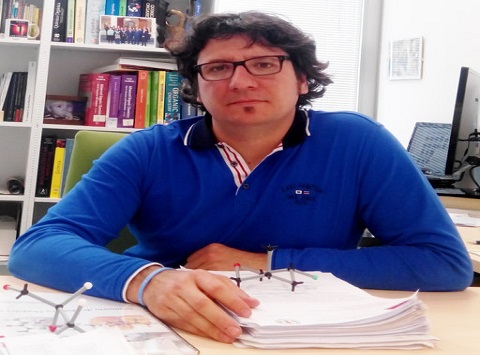
Joaquín C. García Martínez
Universidad de Castilla-La Mancha - Spain
Joaquín C. García Martínez is a Professor of Pharmaceutical Organic Chemistry (PhOC) at Faculty of Pharmacy at Universidad de Castilla - La Mancha (UCLM). He is a Principal investigator (PI) of the group PhOC. Currently, his main research interest is focused on the design of self-assembly light-emitting systems to control their photophysical properties for applications such as sensors or drug-delivery systems. He has published a total of 62 articles, including reviews, research papers, and books, with an H- index of 22. In 2010 he received the Young Researcher Award "Luisa Sigea de Velasco" as the Best Young Researcher.
The intermolecular interactions established in most luminescent organic molecules induce the so-called aggregation-caused quenching (ACQ) of emission. The contrary effects, i.e., aggregation-induced emission (AIE), aggregation-induced enhanced emission (AIEE) and solid-state luminescence enhancement (SLE), could offer a potential solution to this challenge since the materials are non-emissive when they are dissolved in good solvents but highly emissive in solid state as aggregates. Thus, it is have been extenively investigated in solid for ligth emitting diodes (LEDs) but less explorer in other fases such gels or matrix such paper. The behaviour of molecules in these environments is different from the solid state and opens the door to take advantage of this increase in light emission to prepare sensors on paper μPADs or for the encapsulation of drugs that can be localised by fluorecence microscopy.
Scientific Session Speaker
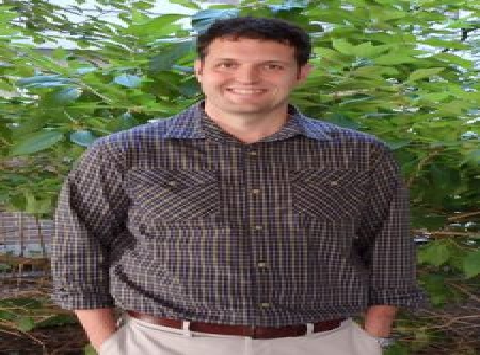
Nathan E. Hudson
East Carolina University, Greenvill - United States
Nathan E. Hudson is an Assistant Professor in the Department of Physics and an Adjunct Assistant Professor in the Department of Biology at East Carolina University. He served as the interim co-director of the East Carolina University Biomaterials Research Cluster. He is recognized nationally and internationally for his research in biophysics and biopolymers, particularly within the field of hemostasis.
Fibrin fibers form the structural backbone of blood clots. They polymerize into a gel at sites of injuries and trap red blood cells and other vaculatutre consitutents during the wound healing process. After the completion of wound healing, fibrin networks are degraded by the enzyme plasmin, in a process called fibrinolysis. In this talk, I will discuss how fiber tension plays an unexpected role in regulating the fibrinolytic process. At the level of individual fibers, we show that tension accelerates the degradation process by pealing back the internal fiber structure during plasmin degredation. Exposing the internal structure uncovers more plasmin binding sites and serves as a feedback mechanism for more rapid degradation. Every time a fiber is transversely cleaved (cutting across the entire fiber), tension in the network is redistributed to the other fibers leading to fiber rearrangements, bundling, buckling, and collapsing. Because of these rearrangements, blood clots can be cleared with only 50% of fibers needing to be cleaved. We modeled our experimental results using simulations, which showed that networks without tension require all fibers to be cleaved before the network is cleared. Thus, fiber tension plays important roles in both the digestion of individual fibers and the clearance of blood clots.